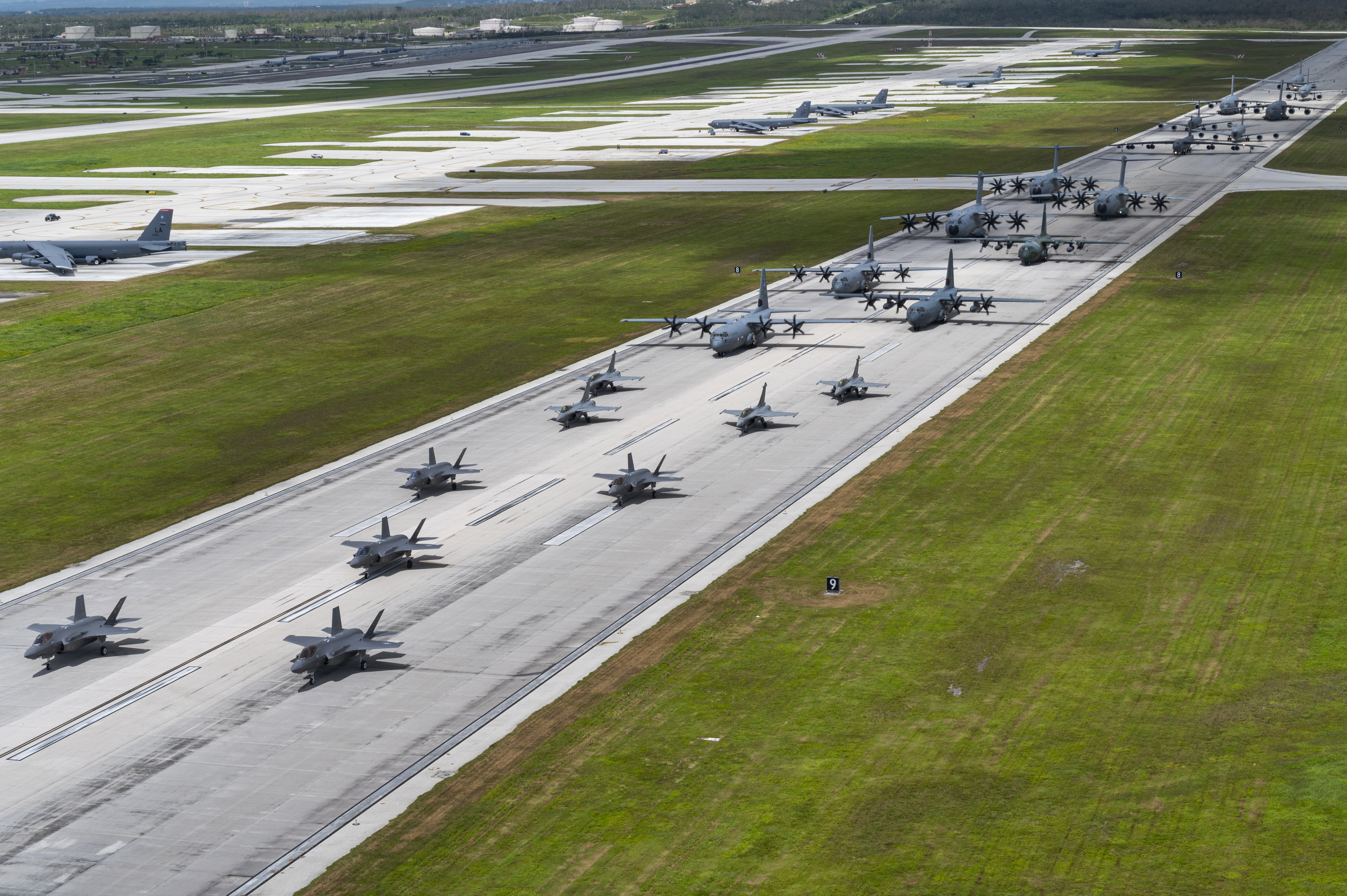The US and its five allied military forces recently staged an impressive “elephant walk” at Andersen Air Force Base in Guam, displaying a diverse fleet of military aircraft, including frontline fighter jets, transport planes, aerial tankers, and bombers.
The images of the elephant walk were released by the Pacific Air Force (PACAF), featuring US and Allied aircraft at Andersen Air Force Base, Guam, on July 19, 2023.
“Train together. Ready together. Stronger together. More than 15,000 US and Allied forces are enhancing #readiness and #interoperability throughout the @INDOPACOM,” PACAF tweeted.
The 23-plane formation was a joint effort involving contributions from the US, United Kingdom, Canada, Australia, Japan, and France.
US Air Force aircraft in the elephant walk included five F-35 fighters, one B-52 bomber, two KC-135 tankers, two C-17 transports, and one C-130.

On the other hand, the allied forces joined in with contributions from France, consisting of four Rafale fighters, one A400 Atlas transport aircraft, and one A330 MRTT; the United Kingdom provided one A400 Atlas; Canada contributed one C-130J and one CC-150T Polaris; Japan included one C-130H; and Australia participated with one C-130J.
According to an Air Force Global Strike Command social media post, there were also additional B-52s parked on the flight line nearby.
The USAF said that over 15,000 US and Allied forces are participating in various exercises, including Mobility Guardian, across the US Indo-Pacific Command area of responsibility to enhance readiness and interoperability.
Mobility Guardian, Air Mobility Command’s flagship exercise, focuses on honing the logistics and mobilization capabilities required for large-scale conflicts in the Pacific.
It supports concurrent exercises led by Pacific Air Forces, such as Northern Edge, which has expanded to other regions of the Pacific from its usual location in Alaska, and Cope Thunder, a joint exercise involving the US and the Philippines.
Scheduled from July 5 to July 21, 2023, the exercise represents a significant evaluation of emerging operational concepts, including the Air Force’s Force Generation Model and Agile Combat Employment.
The latter incorporates a hub-and-spoke base network featuring multiple operating locations manned by versatile Airmen to generate combat sorties efficiently.
Rise In Bomber Activity In Indo-Pacific
These exercises coincide with a recent series of Bomber Task Force rotations in Guam and Japan, which include deployments of both B-52s and B-1s.
On July 5, B-52s and Airmen from the 20th Expeditionary Bomb Squadron at Barksdale Air Force Base, La., arrived at Andersen Air Force Base in Guam.
They joined the B-52s from Minot Air Force Base, ND, which had deployed to Guam in June as part of a Bomber Task Force mission.
On July 10, five days after the B-52s’ arrival in Guam, two B-1s, along with approximately 25 Airmen from Dyess Air Force Base, Texas, arrived at Misawa Air Base in Japan as part of a different Bomber Task Force rotation.
At the time, Lt. Col. Andrew Marshall, the commander of the 345th Expeditionary Bomb Squadron, said that the presence of the B-1 in Japan emphasizes the United States’ dedication to the Indo-Pacific region and its commitment to supporting Allies and partners in the area.
In the context of the Pacific theater, the deployment of bombers to the strategically significant region of Guam has become a customary practice, with their presence serving as a tangible demonstration of the United States’ air power.
However, in a surprising and relatively rare occurrence, the decision to deploy B-1s to the airbase in Misawa, Japan, marks a noteworthy deviation from the norm.
Furthermore, the decision to deploy them to Misawa follows a recent incident on July 12, wherein one of the Minot B-52s had to make an emergency landing at Yokota Air Base in Japan due to an in-flight maintenance issue.
Specific details about the cause of the issue have not been disclosed, but the aircraft departed from Japan on July 20, concluding an eight-day stay.
テイクオーーーーフ‼︎‼︎
See yooooou👋.。.:*☆
B-52 Stratofortress🇺🇸
生きているうちにまた会えるかな…🌱
ゴーニーチャレンジ the end🌻
2023,07,20#yokotaairbase #横田基地 #b52 #minotairforcebase pic.twitter.com/9X11fYKFFY— Mayumi (@Mayumi33825876) July 19, 2023
Overall, amid escalating tensions in the Indo-Pacific region, there has been a notable surge in bomber activity, as the United States Air Force (USAF) has taken proactive measures to enhance its strategic capabilities and demonstrate support to its allies and partners.
Over the last six months, USAF bombers have been actively strengthening their presence, embarking on more than half a dozen sorties traversing the skies over the Korean Peninsula while simultaneously participating in multiple integration exercises in close collaboration with Japan Air Self-Defense Force.
Besides that, the Minot B-52s etched a historic milestone as the first USAF B-52s to touch down on Indonesian soil, as previously reported by the EurAsian Times.
- Contact the author at ashishmichel(at)gmail.com
- Follow EurAsian Times on Google News